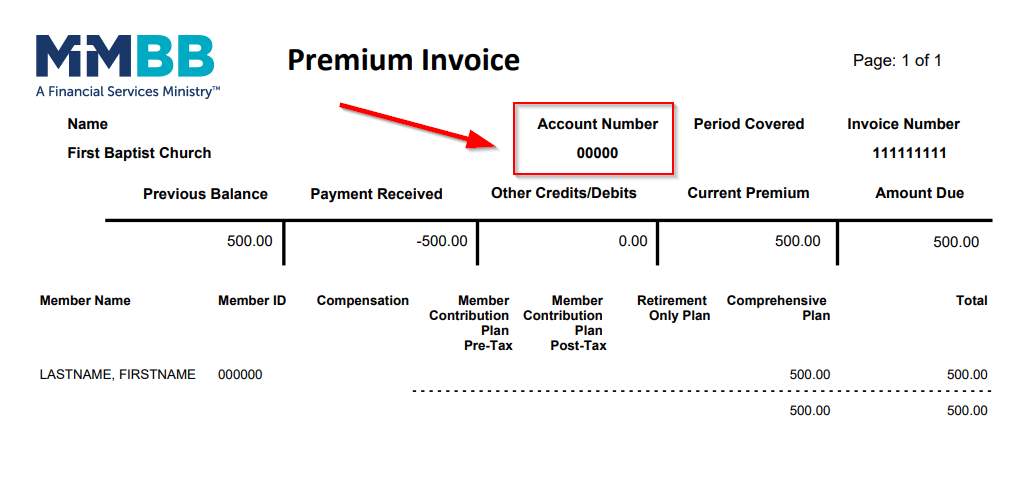The Markets (as of market close April 30, 2024)
Stocks ended April lower, with each of the benchmark indexes enduring their first downturn in several months. Throughout April, investors had to factor in the escalating crisis in the Middle East, increased spending to support Ukraine in its war with Russia, rising inflation, and the Federal Reserve's apparent intent to hold interest rates at a two-decade high. With April's decline, the S&P 500 was on track to end a streak of five straight monthly gains. Consumer confidence (see below) fell in April to its lowest level since 2022. While the labor market continued to support job growth, labor costs increased the most in a year, driven higher by wage pressures that are helping to push inflation higher.
Inflationary data showed price pressures continued to rise in March, with the Consumer Price Index and the Personal Consumption Expenditures Price Index rising 0.4% and 0.3%, respectively, unchanged from the prior month. The CPI rose 3.5% for the 12 months ended in March (3.2% for the year ended in February), while the PCE Price Index increased 0.2 percentage point to 2.7% for the year ended in March. The U.S. economy, as measured by gross domestic product, increased 1.6% in the first quarter, following a 3.4% increase in the fourth quarter (see below). This is the weakest rate of growth since the second quarter of 2022. Consumer spending slowed more than expected, coming in at 2.5% in the first quarter compared to 3.3% in the fourth quarter. Spending on services rose 4.0% in the first quarter, following a 3.4% increase in the previous period.
Job growth continued in March (see below). In addition, a slight downward revision to the February estimate and an upward revision to January yielded a net upward revision of 22,000 in the two months preceding March. Wages continued to rise, increasing 4.1% over the last 12 months. New unemployment claims decreased from a year ago, while total claims paid increased (see below).
At the mid-point of Q1 corporate earnings season, S&P 500 companies continued to generally outperform expectations. Overall, roughly 46% of the S&P 500 companies have reported actual earnings results. Of those companies, 77% have reported earnings per share above estimates. Multiple sectors have reported favorable earnings results, including communication services, financials, industrials, and information technology. Health care has lagged.
The housing market continued to be influenced by high mortgage rates and available inventory. Sales of existing homes declined, while sales of new single-family homes increased. Selling prices for new homes and existing homes continued to climb.
Industrial production ticked higher in March for the second consecutive month. According to the latest survey from the S&P Global US Manufacturing Purchasing Managers' Index™, the manufacturing sector saw its highest rate of expansion in 22 months in March. The services sector saw business accelerate but at its slowest pace in the last three months.
Among the market sectors, only utilities ended April higher. The remaining 10 sectors ended in the red, with real estate (-8.4%), information technology (-5.3%), and health care (-5.2%) falling the furthest.
Bond yields gained as bond prices declined in April. Ten-year Treasury yields generally closed the month higher. The 2-year Treasury yield rose nearly 35.0 basis points to about 5.05% on the last day of April. The dollar surged against a basket of world currencies. Gold prices climbed higher. Crude oil prices dipped lower. The retail price of regular gasoline was $3.653 per gallon on April 29, $0.130 above the price a month earlier and $0.053 higher than the price a year ago.
MARKET SUMMARY
| MARKET/INDEX |
2023 CLOSE |
PRIOR MONTH |
AS OF 4/30 |
MONTHLY CHANGE |
YTD CHANGE |
| DJIA |
37,689.54 |
39,807.37 |
37,815.92 |
-5.00% |
0.34% |
| NASDAQ |
15,011.35 |
16,379.46 |
15,657.82 |
-4.41% |
4.31% |
| S&P 500 |
4,769.83 |
5,254.35 |
5,035.69 |
-4.16% |
5.517% |
| RUSSELL 2000 |
2,027.07 |
2,124.55 |
1,963.91 |
-7.09% |
-2.62% |
| GLOBAL DOW |
4,355.28 |
4,676.17 |
4,552.50 |
-2.64% |
4.53% |
| FED. FUNDS |
5.25%-5.50% |
5.25%-5.50% |
5.25%-5.50% |
0 bps |
0 bps |
| 10-YEAR TREASURIES |
3.86%s |
4.20% |
4.68% |
48 bps |
82 bps |
| US DOLLAR-DXY |
101.39 |
105.55 |
106.30 |
1.67% |
4.84% |
| CRUDE OIL-CL=F |
$71.30 |
$83.06 |
$81.58 |
-1.78% |
14.42% |
| GOLD-GC=F |
$2,072.50 |
$2,244.70 |
$2,302.10 |
2.56% |
11.08% |
Chart reflects price changes, not total return. Because it does not include dividends or splits, it should not be used to benchmark performance of specific investments.
Latest Economic Reports
- Employment: Total employment increased by 303,000 in March, following a downwardly revised February total of 270,000 new jobs. Employment trended up in health care, government, and construction. Over the 12 months ended in March, employment increased by an average of 231,000 per month. In March, the unemployment rate dipped 0.1 percentage point to 3.8% but was 0.3 percentage point higher than the rate a year earlier. The number of unemployed persons was relatively unchanged at 6.4 million, which was nearly 500,000 above the March 2023 figure. In March, the number of
long-term unemployed (those jobless for 27 weeks or more), at 1.2 million, accounted for 19.5% of all unemployed people. Both the labor force participation rate, at 62.7%, and the employment-population ratio, at 60.3%, increased 0.2 percentage point from February. In March, average hourly earnings increased by $0.12 to $34.69. Since March 2023, average hourly earnings rose by 4.1%. The average workweek increased by 0.1 hour to 34.4 hours in March.
- There were 207,000 initial claims for unemployment insurance for the week ended April 20, 2024. During the same period, the total number of workers receiving unemployment insurance was 1,781,000. A year ago, there were 209,000 initial claims, while the total number of workers receiving unemployment insurance was 1,722,000.
- FOMC/interest rates: The Federal Open Market Committee began its meeting at the end of April, with the results available after issuance of this report. Nevertheless, all indications are that the Fed will not decrease interest rates in May or The Fed is also likely to adjust its forecast of three interest rate reductions this year.
- GDP/budget: The economy, as measured by gross domestic product, accelerated at an annualized rate of 1.6% in the first quarter of 2024, according to the initial estimate from the Bureau of Economic Analysis. GDP increased 3.4% in the fourth quarter. Personal consumption expenditures rose 2.5% in the first quarter compared to a 3.3% increase in the previous quarter. Consumer spending on goods dipped 0.4%, while spending on services rose 4.0%. Gross domestic investment rose 3.2% in the first quarter, well above the 0.7% increase in the fourth quarter. Nonresidential fixed investment advanced 2.9% in the first quarter (3.7% in the fourth quarter), while residential fixed investment jumped 13.9% in the first quarter compared to a 2.8% increase in the fourth quarter. Exports inched up 0.9%, while imports, which are a negative in the calculation of GDP, increased 7.2%. Consumer prices increased 3.4% in the first quarter, compared with an increase of 1.8% in the previous quarter. Excluding food and energy prices, the PCE price index increased 3.7%, compared with an increase of 2.0% in the fourth quarter.
- March saw the federal budget deficit come in at $236.0 billion, well below the $296.0 billion February deficit. Through the first six months of fiscal year 2024, the total deficit sits at $1,065.0 billion, which is roughly $36.0 billion lower than the deficit through the first six months of the previous fiscal So far in fiscal year 2024, total government receipts were $2.2 trillion ($2.0 trillion in 2023), while government outlays were $3.3 trillion, compared to $3.1 trillion over the same period in the previous fiscal year.
- Inflation/consumer spending: According to the latest personal income and outlays report, personal income rose 0.5% in March (0.3% in February), while disposable personal income increased 0.5%, up from 0.2% in February. Consumer prices climbed 0.3% in March, the same increase as in the previous month. Consumer prices excluding food and energy (core prices), rose 0.3% in March, the same as in February. Consumer prices rose 2.7% since March 2023, 0.2 percentage point more than the advance for the 12 months ended in February. Core prices increased 2.8% over the same period, unchanged from the 12 months ended in Consumer spending rose 0.8% in March, the same increase as in February.
- The Consumer Price Index rose 0.4% in March, the same increase as in February. Over the 12 months ended in March, the CPI rose 3.5%, up 0.3 percentage point from the period ended in February. Excluding food and energy, the CPI rose 0.4% in March, unchanged from the previous month, and 3.8% from March 2023. Prices for shelter rose in March, as did prices for gasoline. Combined, these two indexes contributed over half of the monthly increase in the CPI for all items. Energy prices rose 1.1% over the month. Food prices rose 0.1% in March.
- Prices that producers received for goods and services rose 0.2% in March following a 0.6% increase in the previous month. Producer prices increased 2.1% for the 12 months ended in March, up from the 1.6% increase for the 12 months ended in February. Producer prices less foods, energy, and trade services advanced 2% in March (0.4% in February), while prices excluding food and energy increased 0.2%. For the 12 months ended in March, prices less foods, energy, and trade services moved up 2.8%. Prices less foods and energy increased 2.4% for the year ended in March.
- Housing: Sales of existing homes fell 4.3% in March and 3.7% over the last 12 months. According to the National Association of Realtors®, existing home sales have stagnated because interest rates have not moved The median existing-home price was $393,500 in March, up from the February price of $383,800 and well above the March 2023 price of $375,300. Unsold inventory of existing homes represented a 3.2-month supply at the current sales pace, up slightly from 2.9 months in February and above the 2.7-month supply from a year earlier. Sales of existing single-family homes decreased 4.3% in March and 2.8% from the prior year. The median existing single-family home price was $397,200 in March, up from $388,000 in February and above the March 2023 price of $379,500. According to Freddie Mac, the 30-year fixed-rate mortgage averaged 6.88% as of April 11, up from 6.82% the previous week and from 6.27% one year ago.
- New single-family home sales climbed higher in March, increasing 8% from February. Sales were up 8.3% from March 2023. The median sales price of new single-family houses sold in March was $430,700 ($406,500 in February). The March average sales price was $524,800 ($488,600 in February). The inventory of new single-family homes for sale in March represented a supply of 6.9 months at the current sales pace, down from 8.0 months in February.
- Manufacturing: Industrial production edged up 0.4% in March, the same increase as in the prior month. Manufacturing output rose 0.5% in March, helped in part by a 3.1% gain in motor vehicles and parts. Manufacturing output excluding motor vehicles and parts moved up 0.3%. Mining decreased 1.4%, while utilities increased 2.0%. For the 12 months ended in March, total industrial production was unchanged compared to its year-earlier level. For the 12 months ended in March, manufacturing increased 0.8%, mining fell 2.0%, and utilities decreased 3.1%.
- New orders for durable goods rose 2.6% in March following a 0.7% (revised) February increase. Excluding transportation, new orders increased 0.2% in March. Excluding defense, new orders rose 2.3%. New orders for transportation equipment advanced 7.7% in March, contributing to the overall increase in new New orders for nondefense capital goods in March increased 5.4%, while new orders for defense capital goods increased 10.6%.
- Imports and exports: S. import prices advanced 0.4% in March following a 0.3% advance in the previous month. Import prices increased for the third straight month in March, and have advanced 0.4% over the last 12 months, the first yearly increase since January 2023. Import fuel prices rose 4.7% in March, the largest one-month increase since September 2023. Import prices excluding fuel ticked up 0.1% in March. Export prices rose 0.3% in March after advancing 0.7% in February. Higher nonagricultural prices in March more than offset lower agricultural prices. Despite the recent increases, export prices fell 1.4% from March 2023, the smallest 12-month drop since the year ended February 2023.
- The international trade in goods deficit was $91.8 billion in March, up $1.5 billion, or 1.7%, from February. Exports of goods were $169.2 billion in March, $6.1 billion, or 3.5%, less than in February. Imports of goods were $261.0 billion in March, $6.1 billion, or 7%, under the February estimate. Since March 2023, exports declined 2.1%, while imports increased 2.5%.
- The latest information on international trade in goods and services, released April 4, is for February and revealed that the goods and services trade deficit was $68.9 billion, up $1.3 billion, or 1.9%, from the January deficit. February exports were $263.0 billion, 2.3% more than January exports. February imports were $331.9 billion, 2.2% more than January imports. Year over year, the goods and services deficit decreased $3.9 billion, or 2.8%, from February 2023. Exports increased $9.3 billion, or 1.8%. Imports increased $5.4 billion, or 0.8%.
- International markets: Eurozone inflation remained at 2.4% in April, in line with expectations. Prices advanced for food, alcohol, and tobacco, while energy prices decreased. For April, consumer prices rose 4%. On a positive note, Eurozone gross domestic product expanded by 0.3% in the first quarter, the fastest rate of growth since the third quarter of 2022. China's manufacturing activity expanded in April for the second consecutive month, albeit at a slower pace than in the previous month. The Japanese yen weakened against the dollar as U.S. interest rates have climbed while Japan's rate has remained near zero. The result is money has flowed out of the yen and into higher-yielding assets. For April, the STOXX Europe 600 Index fell 0.4%; the United Kingdom's FTSE gained 2.9%; Japan's Nikkei 225 Index declined 3.5%; and China's Shanghai Composite Index gained 1.0%.
- Consumer confidence: Consumer confidence receded for the third consecutive month in The Conference Board Consumer Confidence Index® was 97.0 in April, well under a downwardly revised 103.1 in March. The Present Situation Index, based on consumers' assessment of current business and labor market conditions, declined to 142.9 in April, down from 146.8 in the previous month. The Expectations Index, based on consumers' short-term outlook for income, business, and labor market conditions, slipped to 66.4 in April, down from 74.0 in March.
Eye on the Month Ahead
May begins with the Federal Open Market Committee meeting. The employment figures for April are also available early in the month. Investors will also be focused on corporate earnings throughout the month and impact of ongoing tensions in the Middle East. Despite April's slide, May has historically been a positive month for stocks.
Data sources: Economic: Based on data from U.S. Bureau of Labor Statistics (unemployment, inflation); U.S. Department of Commerce (GDP, corporate profits, retail sales, housing); S&P/Case-Shiller 20-City Composite Index (home prices); Institute for Supply Management (manufacturing/services). Performance: Based on data reported in WSJ Market Data Center (indexes); U.S. Treasury (Treasury yields); U.S. Energy Information Administration/Bloomberg.com Market Data (oil spot price, WTI, Cushing, OK); http://www.goldprice.org (spot gold/silver); Oanda/FX Street (currency exchange rates). News items are based on reports from multiple commonly available international news sources (i.e. wire services) and are independently verified when necessary with secondary sources such as government agencies, corporate press releases, or trade organizations. All information is based on sources deemed reliable, but no warranty or guarantee is made as to its accuracy or completeness. Neither the information nor any opinion expressed herein constitutes a solicitation for the purchase or sale of any securities, and should not be relied on as financial advice. Past performance is no guarantee of future results. All investing involves risk, including the potential loss of principal, and there can be no guarantee that any investing strategy will be successful.
The Dow Jones Industrial Average (DJIA) is a price-weighted index composed of 30 widely traded blue-chip U.S. common stocks. The S&P 500 is a market-cap weighted index composed of the common stocks of 500 largest, publicly traded companies in leading industries of the U.S. economy. The NASDAQ Composite Index is a market-value weighted index of all common stocks listed on the NASDAQ stock exchange. The Russell 2000 is a market-cap weighted index composed of 2,000 U.S. small-cap common stocks. The Global Dow is an equally weighted index of 150 widely traded blue-chip common stocks worldwide. The U.S. Dollar Index is a geometrically weighted index of the value of the U.S. dollar relative to six foreign currencies. Market indices listed are unmanaged and are not available for direct investment.
IMPORTANT DISCLOSURES
Broadridge Investor Communication Solutions, Inc. does not provide investment, tax, legal, or retirement advice or recommendations. The information presented here is not specific to any individual’s personal circumstances.
To the extent that this material concerns tax matters, it is not intended or written to be used, and cannot be used, by a taxpayer for the purpose of avoiding penalties that may be imposed by law. Each taxpayer should seek independent advice from a tax professional based on his or her individual circumstances.
These materials are provided for general information and educational purposes based upon publicly available information from sources believed to be reliable — we cannot assure the accuracy or completeness of these materials. The information in these materials may change at any time and without notice.








